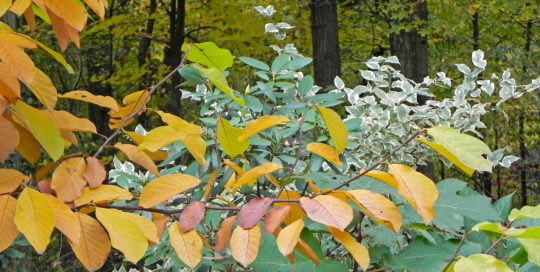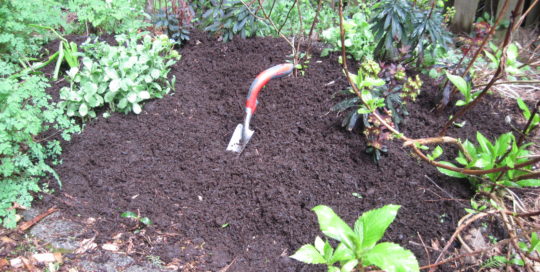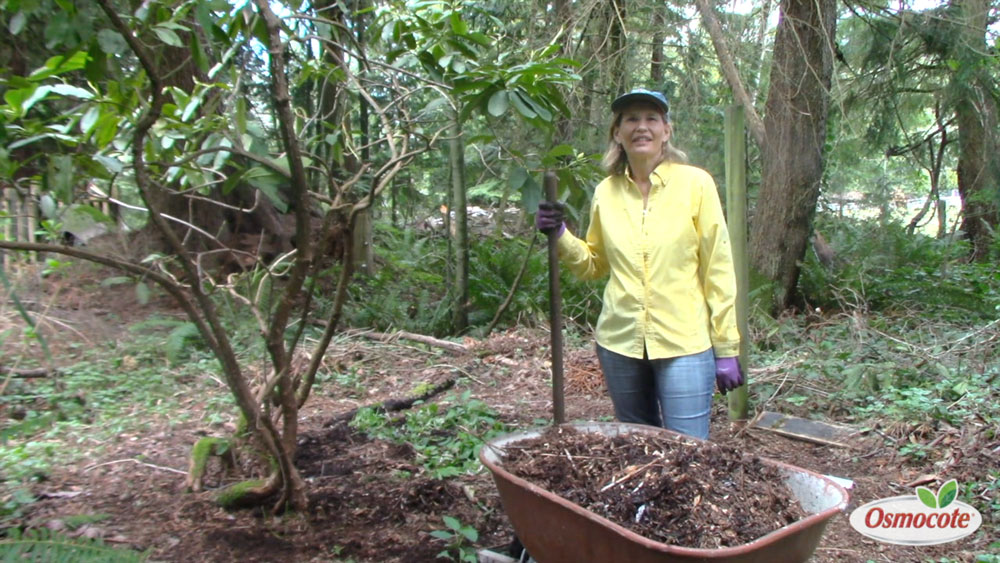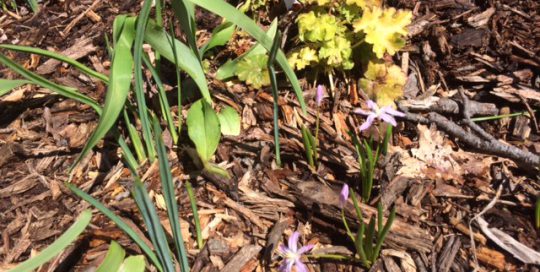Inorganic
Inorganic mulch can include shredded rubber, rock, plastic sheeting and landscape fabric, none of which contribute to the quality of the soil it covers. Recycled rubber from tires has been under scrutiny due to its chemical seepage into the soil and for its flammability. In a report by Linda Chalker-Scott, Extension Horticulturist and Associate Professor for Washington State University, considerations for using recycled rubber in the landscape are listed and explained.
Rock can be an issue for lawn mower blades if it scatters, and it’s certainly not weed-proof. Soil builds up in between the rocks, creating deep pockets for weeds that are all but impossible to pull.
Landscape fabric used around shrubs and trees allows moisture through, and helps keep weeds down. Only use this on long-term planting beds—those that contain trees and/or shrubs. The fabric is a challenge to remove if you want to change the planting bed. Plastic can be used to mulch a garden devoted to annual row crops like vegetables, but should never be used as a landscape mulch for trees, shrubs, or perennials. A growing plant needs air and moisture, which is limited with the use of plastic.
Why Mulch?
Mulch prevents soil from eroding away during heavy rains, and keeps that soil from becoming compacted. As organic mulch breaks down, it adds nutrients and a nice texture to the soil. Well-applied mulch makes springtime gardening easier.
The soil in my gardens are all protected in spring with a layer of shredded bark mulch. In fall, I clear lawn areas, but let the leaves from dozens of oak trees fall on beds with permanent plantings and wait until spring to rake them, gradually as the weather warms, away from the plants.
The Chicago Botanic Garden explains the purpose of a winter mulch:
“A common misconception is that a layer of mulch prevents soil from freezing. It actually lessens the possibility of plants being heaved out of the ground by freeze/thaw cycles. Mulch allows soil to warm up gradually in spring, preventing damage to plants that emerge early before temperatures are warm enough to sustain them. Roses and tender perennials in particular benefit from an application of winter mulch. Remove winter mulch from the base of protected plants in the spring when you observe new growth.”
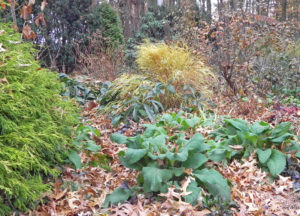
Related Blogs
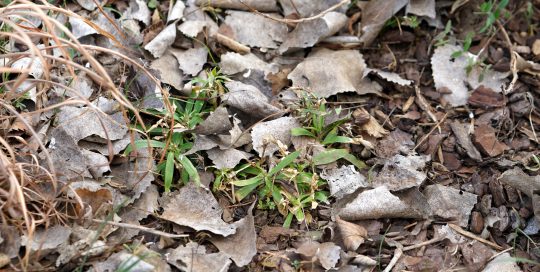
While potentially helpful to birds, mulching with leaves can cause a problem
Read this post

